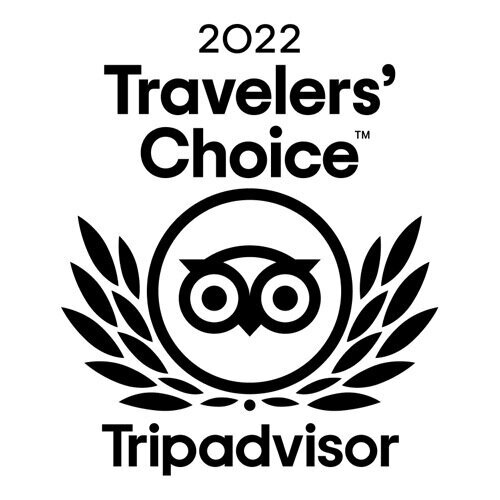As a UNESCO-listed site, Hoi An offers a small-scale, walkable charm in its lantern-lit alleys and riverside cafés. We always recommend Hoi An to couples looking for a romantic stop, families who need a break from big cities, or culture travelers interested in Vietnamese craftsmanship.
If you're thinking about adding Hoi An to your Vietnam trip, this guide will help you figure out when to go, how long to stay, and where to base yourself.
When is the Best Time to Visit Hoi An
Hoi An has two main moods: the sunny dry season (Feb–Aug) and the rainier, more humid months (Sept–Jan).
February to April is the best time to visit Hoi An. You could expect clear skies, mild heat (low 30s°C / 86°F), and low humidity to explore the Ancient Town, cycle to nearby villages, or dine by the river without breaking a sweat.
May to August is hotter (over 35°C/95 °F), but it's great for beach breaks at An Bang or indoor activities like cooking classes and spa sessions. For active travelers (especially families with teens), schedule outdoor plans in the early morning and late afternoon.
September to January sees more rain, especially in October and November, when occasional typhoons or street-level flooding can happen. It's not for everyone, but if you're fine slowing down and embracing a few weather surprises, you'll find fewer crowds and better hotel rates, except at Christmas, New Year, and Tet.

Best Things to Do in Hoi An Ancient Town
If you're only skimming blogs, you'll hear about lanterns, tailoring, and the Ancient Town. But what really makes a Hoi An trip memorable is how it's put together. We usually craft experiences based on personality, not checklists.
For Romance Seekers
A slow, hand-rowed boat at sunset beats the noisy motorboats every time, especially when it ends with a surprise riverside dinner.
Planning something special, like an anniversary? Slip into an ao dai and have golden-hour photos taken under the lanterns. Want to make it even more meaningful? Step into a local workshop and craft a ring or necklace together. Simple, heartfelt, and very Hoi An.
 The Ancient Town in Hoi An
The Ancient Town in Hoi AnFor Families Who Like to Do, Not Just See
A lantern-making class with local artisans is hands-on and memorable. For teens and young adults, a guided street food tour hits the sweet spot—less lecture, more tasting, and a fun way to explore the town together. (Travel with us for a route that avoids the tourist traps and highlights heritage bites you won't find on Google.)
 Enjoying Local Food
Enjoying Local FoodFor Culture Lovers Who Go Deeper
A guided walk at dawn, before the heat and crowds, is the best way to trace the town's mixed heritage, from the Japanese Covered Bridge to the Chinese assembly halls and Vietnamese ancestral houses. A good guide will connect the dots—and the stories—between them.
 Fukian Assembly Hall, Hoi An
Fukian Assembly Hall, Hoi AnEvening Travel Tips: Enjoy the Lanterns Without the Crowds
Many travelers expect the magic to start at night, but get caught in the 7–9 pm crowd. That's why we recommend heading out around twilight (5:30–6:30 pm) instead.
Want a plan without too much planning? Try hidden rooftop cocktails (like Faifo Coffee) or progressive dinners through lesser-known eateries to escape the tourist circuit without missing the fun.
Day Trips from Hoi An Ancient Town
Most spots are perfect for a half-day visit, which means you'll still have time to enjoy the Ancient Town without feeling rushed. Here are some favorites we often recommend, depending on your interests:
1. Tra Que Vegetable Village: A Taste of Countryside Life
Just a 15-minute bike ride away, Tra Que is ideal if you enjoy quiet paths and authentic local interaction. Some of our clients have loved learning how to cook with ingredients they picked that morning, guided by a local family.
 Visiting a local family at Tra Que Vegetable Village
Visiting a local family at Tra Que Vegetable Village2. Fishing Life Experience: Active, Local, and Fun
A fun half-day trip to a nearby fishing village, where you can paddle a basket boat, try casting a net, and enjoy a simple lunch on board.
 Bamboo Basket Boat Ride in Hoi An
Bamboo Basket Boat Ride in Hoi An3. My Son Sanctuary: A Must for History Buffs
Set in the jungle about an hour from Hoi An, this cluster of Hindu temple ruins is a UNESCO site with deep Cham cultural roots. Go with a guide—otherwise, much of the meaning gets lost. We often arrange early-morning visits to beat the heat and tourist buses.

4. Cham Islands (March–September): Clear Water and Coral
If you're looking for a half-day of clear water and coral, this is a good call. But please note that snorkeling or diving is not available from October to February due to rough sea conditions.
5. If You're Curious About Da Nang
Some travelers wonder if they should squeeze in Da Nang attractions. Here's our take:
- A Day Trip to Ba Na Hills
The Golden Bridge (those giant hands!) is Instagram-famous, but the entire area is actually a mountaintop Disney-style theme park with cable cars and fantasy architecture.
If you're not into theme parks or crowds, though, you might want to skip it, as many visitors have described it as "overcrowded" and "very busy," especially during peak seasons.
- Marble Mountains
These pagoda-studded hills offer cool views over the coastline and cave shrines. Worth a stop if you're already heading to Da Nang, but not a must-see if your time's tight. Also, the steep steps make this site less suitable for travelers with limited mobility.
How Long to Spend in Hoi An
We recommend 2–3 full days in Hoi An for most first-timers. It gives you time to soak up the lantern-lit town, explore the countryside, and enjoy a local experience or two.
Here's what a relaxed, well-paced itinerary looks like:
- Day 1: Fly into Da Nang, transfer to Hoi An
- Day 2: Walking tour + fishing life experience
- Day 3: Cooking class at Tra Que Village
- Day 4 (optional): My Son Sanctuary or beach time at An Bang
If you're only coming for a day trip from Da Nang, focus on the Ancient Town: Take a walking tour, enjoy riverside coffee, and try a twilight boat ride. For active travelers, set aside some time to cycle to Tra Que Village.
If Hoi An is just one stop on your Vietnam journey, see our Vietnam trip planning tips (or the family trip version) to help connect the dots.
Where to Stay in Hoi An
When booking a hotel in Hoi An, the most popular areas are the Riverside Area, the Old Town Area, and An Bang Beach.
Riverside Area is our top pick. Just a short walk or bike ride from the Ancient Town, it offers a quiet, scenic setting with boutique hotels, pools, and more space to relax. Many hotels provide free bikes or shuttles for easy access to the center.
The Old Town Area puts you right in the heart of the lantern-lit streets. Perfect if you want to walk out into the magic each evening—but you'll trade peace for proximity. And heritage-style rooms tend to be on the smaller side.
The An Bang Beach is great for a relaxed break. While it doesn't match the scale of Thai or Balinese beaches, it charms with gentle waves and quiet moments.
 Silk Sense Hoi An River Hotel
Silk Sense Hoi An River HotelHow Much Does a Trip to Hoi An Cost?
Hoi An is affordable, but there's a range depending on how you want to travel.
For a self-guided, minimalist trip: ~US$60–80/day per person, including budget hotels, public transport, and simple experiences.
Most of our clients spend about US$150–250/day per person. This includes seamless airport transfers, expert-guided cultural walks, private classes, and thoughtfully selected stays near the Ancient Town with space to unwind.
Tip: Cash is still king in Hoi An. While hotels and major restaurants accept cards, you'll want cash for markets, tips, and local stalls.
Getting to Hoi An
Hoi An doesn't have an airport or train station, but it's easily reached from Da Nang (about 45 minutes by car).
Da Nang is well-connected with domestic flights from Hanoi and Ho Chi Minh City, as well as international links to Bangkok, Singapore, and Seoul, making it easy to slot Hoi An into a larger itinerary.
From Da Nang Airport to Hoi An, public buses are available but not recommended if you're carrying luggage or arriving late.
If you're departing from Hue, the scenic route via the Hai Van Pass makes for a memorable overland transfer. A guided drive with stops at fishing villages and viewpoints turns a travel day into a highlight.
What's the best way to explore Hoi An's Ancient Town?
On foot. The Ancient Town is compact and closed to motor traffic during most of the day, making it perfect for walking. Strolling lets you take in the details—lantern-lit alleyways, historic shop-houses, hidden courtyards—at your own pace.
By bike. If you want to go beyond the Old Town, hop on a bicycle. Within minutes, you'll be riding through rice fields, small craft villages, or even to the riverside for a cooking class or countryside lunch.
 Rural Views of Hoi An
Rural Views of Hoi AnFAQs: What Travelers Ask Us Most About Hoi An
1. Is it better to stay in Hoi An or Da Nang?
For charm, Hoi An wins hands down. Da Nang is better for business or quick beach time. We usually recommend staying in Hoi An and doing a half-day Da Nang visit if needed.
2. How bad is the flooding during the rainy season?
October–November may see ankle-deep water in some town areas for short periods. So keep flexible and build backup options into rainy-season itineraries.
3. Can I get vegetarian food easily in Hoi An?
Yes. Many locals eat vegetarian food regularly. You'll find meat-free versions of dishes like cao lầu and white rose dumplings. There are also cafés and restaurants that focus on plant-based food.
4. Do I need a visa to visit Hoi An?
Citizens of countries like the UK, Japan, France, Germany, South Korea, and most ASEAN nations enjoy visa-free entry. Others can apply for an e-visa, valid up to 90 days with multiple entries.
Travelers ❤ Highlights Travel
Ready to Start Planning?
We don't just plan Hoi An. We curate it, matching you with artisans, guides, and places that make this small town feel unforgettable. If that's the kind of Vietnam you're looking for, we'd love to help.
Get Inspired with Some Popular Itineraries
At Highlights Travel, we create your kind of journey — your dates, your destinations, at your pace. You can have any trip tailor made for your travel.

































